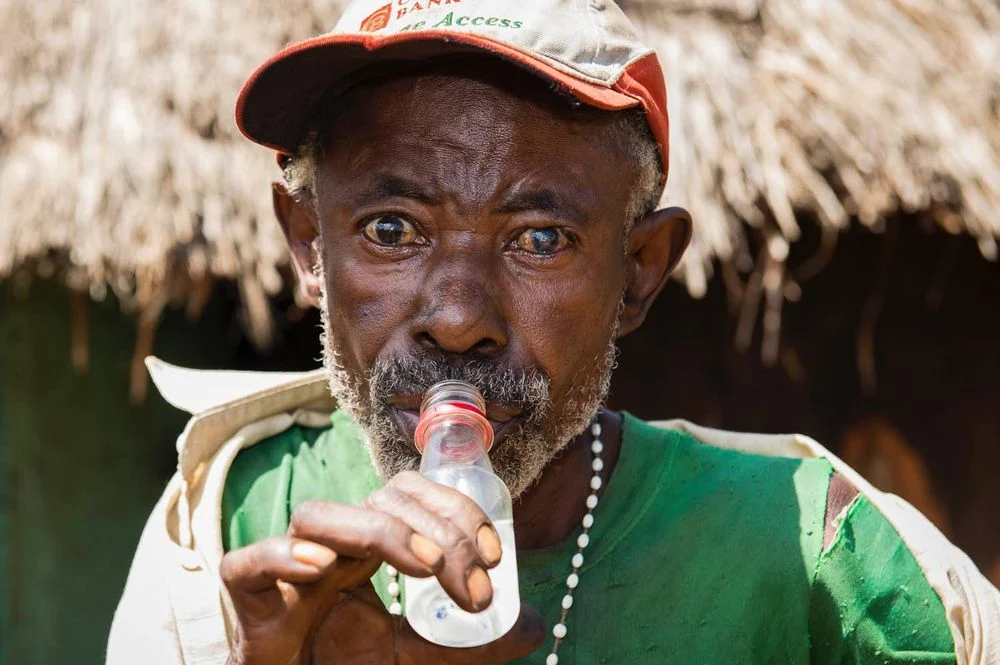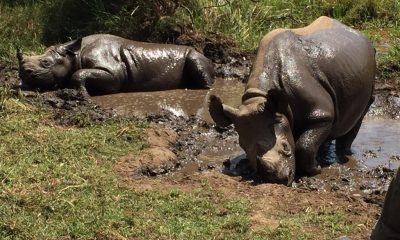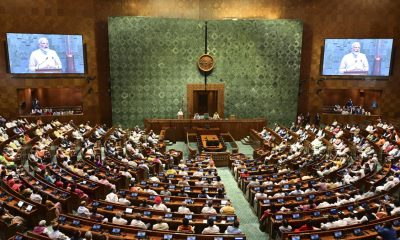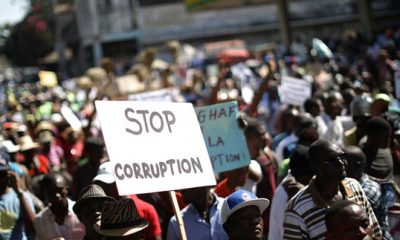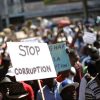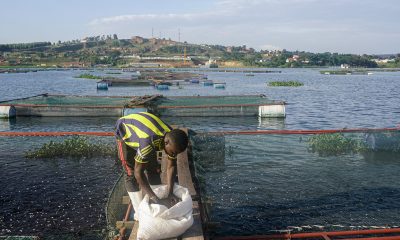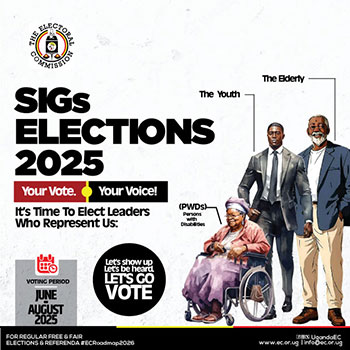Analysis
Consumption Of Illicit Alcohol In Uganda Increases to 71% – Malwa, Kwen & Kasese Dominate
A new custom research report released today by the Alcohol Industry Association of Uganda (UAIA) reveals a significant surge in the consumption of traditional artisanal alcoholic beverages, commonly known as Malwa, Kwen, Kasese, and Arege. The report, “Understanding Illicit Alcohol Market in Uganda,” compiled by renowned international researcher Euromonitor International, indicates a 2% growth in artisanal alcohol sales, rising from 69% in 2020 to 71% in 2024.
The findings, launched at Kampala Serena with key industry stakeholders in attendance, paint a concerning picture of Uganda’s alcohol market. The research, conducted in the first quarter of this year, highlights that Ugandans annually consume an average of 4.6 litres of pure illicit alcohol, double the 2.3 litres of pure legal alcohol. To put this into perspective, 4.6 litres is equivalent to four 500ml cans of beer, four glasses of wine, or seven 30ml shots of vodka per week.

People enjoying Malwa
The UAIA commissioned the report to gain a deeper understanding of the illicit alcoholic drinks trade, its scale, drivers, and impact on government revenue compared to 2020. The overarching goal is to collaborate with the government to address and combat this pervasive issue.
Emmanuel Njuki, Vice Chairperson of the UAIA, emphasised the long-standing challenge during his introductory remarks. “For about 10 years up to date, illicit alcohol has been accounting for 65% of the market, and the 35% of legal and regulated alcohol are paying over UGX 1 Trillion in taxes. Government should be concerned about the revenue losses,” he stated.
Njuki added that tackling the illicit alcohol challenge would unlock significant business opportunities. “If the challenge of illicit alcohol was to be tackled, it would mean a better business opportunity; either you will see a lot of investments from the existing industry players, or you will see more people coming into this market to invest. Through that, we get more taxes, then there’s good health of our people and a better Return on Investment for our industry investors.”
The report reveals that the total alcohol market in 2024 amounted to UGX 15 trillion, with a staggering 40% (UGX 6 trillion) attributed to illicit alcoholic beverages. Factors such as unemployment and the rising cost of living are identified as primary drivers for the demand for affordable, homemade artisanal alcohol, which can be up to 81% cheaper than legal alternatives.
Interestingly, the report also notes an unforeseen advantage: counterfeiting and smuggling/contraband alcohol saw a slight decrease from 2020-2024, shrinking from 27% to 25% and 4% to 3%, respectively. Despite this, the total Ugandan alcohol market reached 1.7 million hectoliters in 2024, with illicit products accounting for 67.3% compared to 64.5% in 2020.
Benjamin Rideout, a consultant from Euromonitor International, presented the report, explaining that the illicit alcohol market expanded by 157,453 hectoliters between 2020 and 2024. The volume share of illicit alcohol increased to 67.3% in 2024 from 64.5% in 2020. The fiscal loss due to illicit alcohol sales grew at a Compound Annual Growth Rate (CAGR) of 16.2%, driven by increasing volumes and higher excise duties on various alcohol categories like wine and spirits.
“Illicit alcohol is driven by affordability, accessibility, and low levels of enforcement. With over 20% of Uganda’s population living below the national poverty line, the affordability of alcoholic beverages is paramount to influencing consumer choices,” Rideout explained. He added that illicit alcoholic beverages are characteristically cheaper than legal brands, with producers and distributors closely monitoring legal market prices to maximise profits, especially with counterfeits.
Rideout further indicated that consumers perceive illicit alcohol as most widely available in Buganda (26%), West Nile (19%), Lango (19%), and Teso (13%), while in Busoga along the Eastern Border, it’s available at 15%.
The report highlights significant tax leakage from the thriving illicit alcohol trade, stemming from unregulated distilleries not declaring, under-declaring, or misclassifying their production, followed by counterfeit fabrication. The contribution of counterfeit and illicit brands to fiscal loss was valued at UGX 3 trillion in 2024. Alarmingly, only 10% of consumers associate illicit beverages with tax evasion or loss of revenue to the government.
“Illicit alcoholic drinks are priced more affordably, with price points up to 81% lower than the equivalent legal beverages. While spirits, such as vodka and gin, are cheaper by around 29%, whereas brown spirits, such as rum and whisky, deliver discounts of 15% on average,” states the report.
In response to these findings, the UAIA recommends widespread public sensitisation on the impact of illicit substances, not only on health but also on broader societal well-being. The association believes that educating consumers on how illicit alcohol inadvertently impacts their access to social amenities could lead to a behavioural shift in consumption.
Isaac Arinaitwe, Principal Economist at the Finance Ministry, commended the UAIA for initiating the study, acknowledging the alarming fiscal loss findings. He pledged to collaborate with the Euromonitor team to thoroughly understand the report’s figures. “Illicit alcohol even has a public health challenge to the consumers; it undermines fair competition to legitimate players,” Arinaitwe noted. He suggested that while tackling artisanal alcohol might be challenging, addressing counterfeits would require a holistic approach involving the Ministry of Local Government due to its nationwide presence.
Abel Kagumire, Commissioner Executive Operations at the Uganda Revenue Authority (URA), revealed that the tax body has established a working group to gather field intelligence and combat illicit trade, particularly in alcohol and tobacco.
Hon. Amos Kankunda, Chairperson of the Parliament Finance Committee, confirmed that with increased budget allocation to URA and relevant government agencies, enforcement efforts would be intensified. He stressed that, beyond fiscal loss, the government is also losing citizens due to the consumption of illicit alcohol.
“In West Nile, we still have the challenge of illicit, Eastern Uganda has largely been handled apart from the issue of ethanol, which traders claim is from Kenya, yet it is from Swaziland. Identification of illicit products is still a challenge, unless the officers are trained in the field on how to identify them,” Kankunda stated.

Waragi in making
Kagumire expressed surprise at the report’s findings, stating, “This report has unearthed areas where leakages have been, we have been collecting UGX 1 Trillion from the industry and we clap hands, but using this, we can even collect UGX 4 Trillion. As URA, we are surprised by the findings and we have taken them in good faith.”
Despite the overall increase in illicit alcohol, the report noted that counterfeiting and smuggling/contraband alcohol’s respective shares slightly decreased from 27% to 25%, and 4% to 3%, between 2020 and 2024. Counterfeit alcohol remains prevalent in both formal and informal on-trade outlets, while smuggled/contraband alcohol primarily originates from Kenya and the Democratic Republic of Congo (DRC) through porous land borders and via Lake Victoria through Kenya’s port of Mombasa.
Comments



